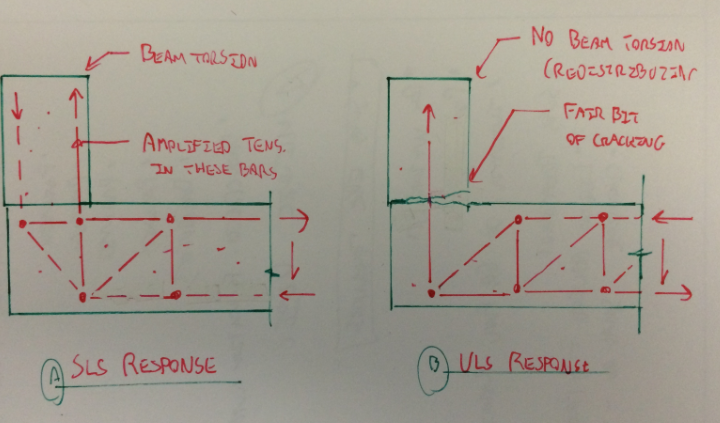struggle66
Civil/Environmental
- Jul 5, 2013
- 127
Hi everyone,
Good Day,
My secondary beam is lower than my primary beam please see the sketch below if I use shear links to transfer secondary beam reactions to the top of primary, is it ok? Any other things to take into consideration?
Thanks in advance for your replies.

Good Day,
My secondary beam is lower than my primary beam please see the sketch below if I use shear links to transfer secondary beam reactions to the top of primary, is it ok? Any other things to take into consideration?
Thanks in advance for your replies.



